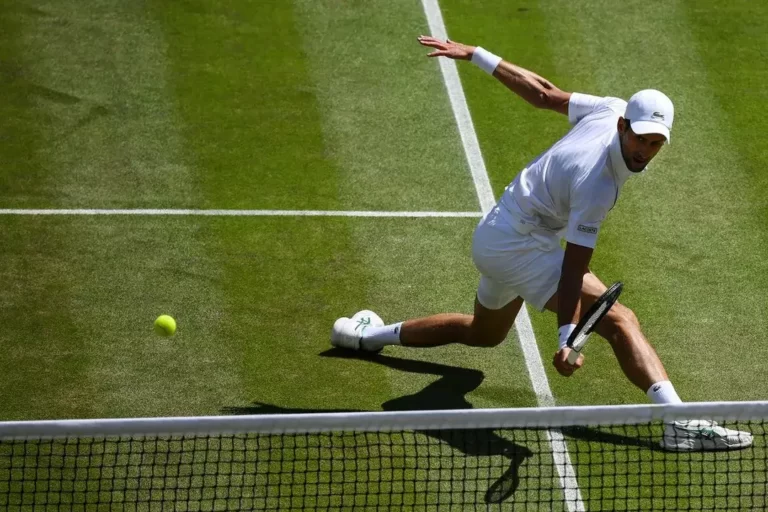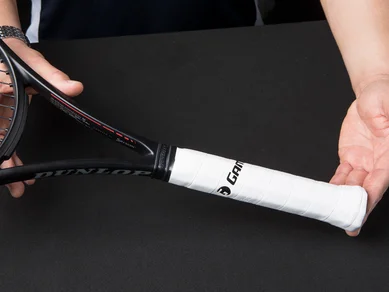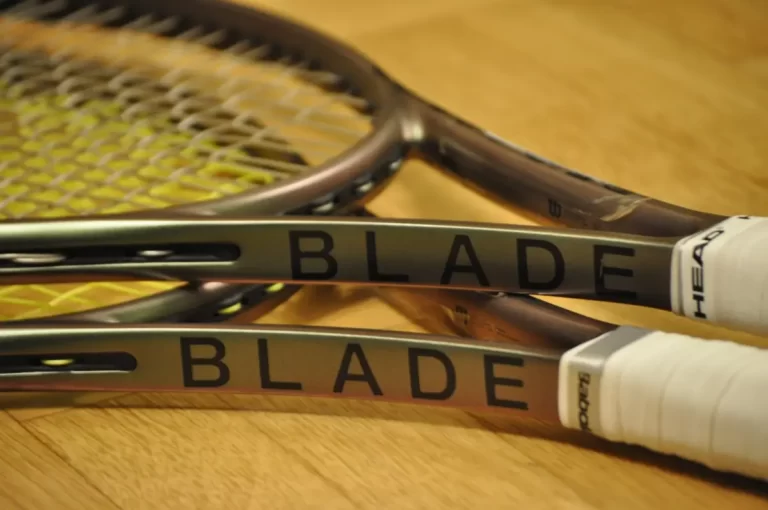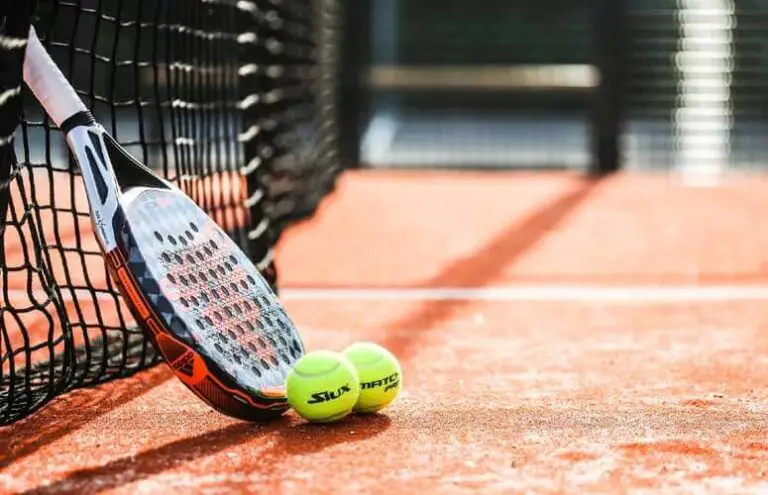Do Tennis Pros Use Dampeners? ( Why They Are So Important? )
A longstanding debate exists within the tennis community: Do tennis pros use dampeners, or are these small pieces of rubber merely decorative in nature? If they do use them, is it for functional purposes, or is it just a matter of personal preference?
And ultimately, do these dampeners genuinely impact the game, or are their effects mostly psychological?
Do Tennis Pros Use Dampeners? Yes! according to a New York Times report, over half of the professional tennis players, irrespective of their gender, utilize dampeners frequently in their tour-level competitions.
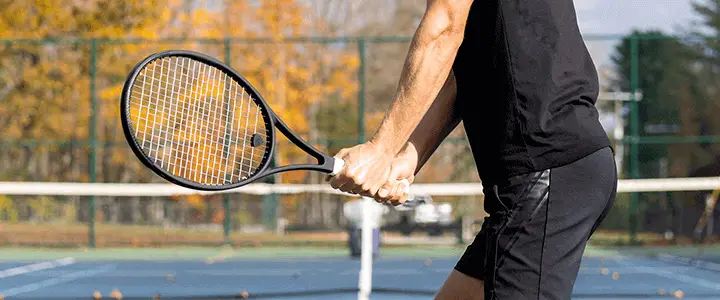
This article aims to look into the world of tennis dampeners. Taking a closer look at their design, evaluating their effectiveness, and considering their usage by professional tennis players, this post will shed light on their role in the sport.
Dampeners in Action Statistically
According to the data, about 58% of the top 100 professional tennis players on the men’s ATP Tour who play on hard courts use dampeners to minimize sound and vibration.
In contrast, the usage rate among the top 100 female players on the WTA Tour is even higher, with about 76% of players employing them. However, a small percentage of players on both tours do not use a dampener, at 42% and 24%, respectively.
One key takeaway from these figures is that the majority of the world’s top professional tennis players find some value in using dampeners on their racquet strings.
Yet, it’s intriguing to note that some of the most successful players, like Roger Federer and Serena Williams, do not use vibration dampeners in their tennis racquets.
Brief Overview for Beginners
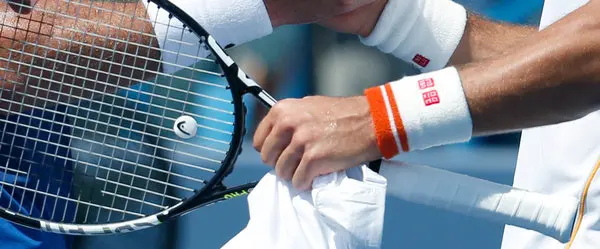
Tennis racquets are equipped with small rubber pieces known as dampeners or shock absorbers. These components have one main function – to reduce the vibration that is produced when the ball makes contact with the racquet.
By working to reduce this vibration, dampeners help to improve the playing experience for tennis players.
They have become one of the most common tennis accessories, despite observations that they only reduce string vibration and do not affect the frame’s vibration.
The effect of dampeners is more evident in the sound produced when striking a tennis ball. A string bed with a vibration dampener tends to produce a more muffled sound, as opposed to the distinct “ping” heard from a string bed without one.
Necessity or Preference
Whether you’re a seasoned tennis player or a novice, using a vibration dampener is not a mandatory aspect of the game. It doesn’t necessarily contribute to significant improvements but is often a matter of personal preference.
While their primary function is to reduce vibrations, most professional tennis players who use dampeners do so to decrease the “ping” sound produced upon impact with the tennis ball. This serves more of a psychological purpose than a physical one.
However, there are two common misconceptions regarding vibration dampeners. They:
- Help prevent tennis elbow problems.
- Help reduce a racquet’s power level and improve strokes.
These claims are often marketing strategies employed by manufacturers, with little to no evidence supporting them. In fact, racquet manufacturers often incorporate dampening properties into the racquet frames, which provide better shock absorption than a vibration dampener.
Moreover, the size of some dampeners is so small that they barely impact the racquet’s performance.
Where and How to Add a Vibration Dampener?
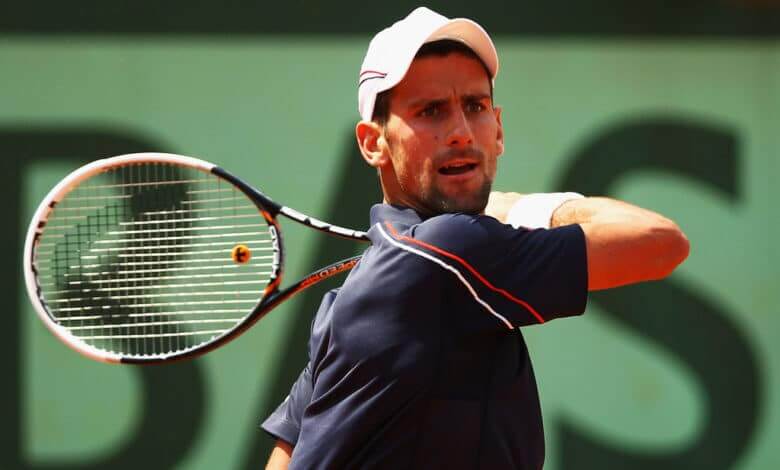
The International Tennis Federation (ITF) regulations offer tennis players the freedom to attach dampeners to any part of the racquet strings that are not situated within the cross-string pattern. This means that a dampener can be placed on any of the outer edges of the racquet strings.
The number of dampeners a player can add to a racket isn’t restricted, with some players opting to use more than one.
There are two major types of vibration dampeners available in the market: Button dampeners, which are similar to the buttons on clothing, and Worm (Snake) dampeners, which are longer and woven between the main strings.
While button dampeners are easy to install and more common among professionals, worm dampeners may be slightly more challenging to install.
Dampeners vs. Rubber Bands
The debate extends to the comparison between vibration dampeners and rubber bands. Both are crafted out of rubber, providing them with the advantages of being flexible and able to absorb shock. This property of rubber ensures that they are equipped to withstand the rigors of use.
However, rubber bands have a higher elasticity, allowing users to shape them as desired. The significant difference between a vibration dampener and a rubber band is largely aesthetic.
Both rubber bands and strings are designed to minimize the number of vibrations in the string bed, but rubber bands can become stretched out over time and may come off the strings.
Professional tennis players frequently choose smaller vibration dampeners that cover the two primary strings and the base intersection or a rubber band. A few of the top-rated vibration dampeners incorporate ADV Tennis, Tourna Sampras, 21k Sports, Wilson Pro Feel, and Head Djokovic.
Do Vibration Dampeners Work?
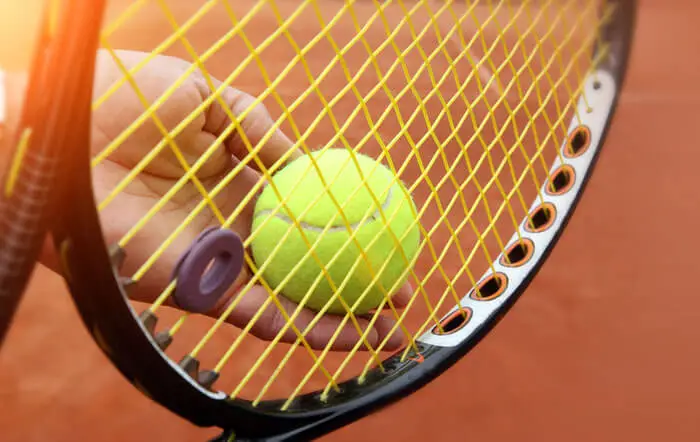
The debate surrounding the efficacy of vibration dampeners has been ongoing. Do they genuinely serve a purpose beyond being decorative? Do they enhance your game, improve your strokes, or prevent tennis elbow?
Research results have demonstrated that dampeners are ineffective when it comes to decreasing the amount of racquet frame vibration that is received by the forearm.
This data implies that the vibration is not significantly affected by the dampener and that other measures may need to be taken in order to reduce the amount of vibration experienced by the arm.
Dr. Francois-Xavier Li, from the University of Birmingham’s School of Sport and Exercise Sciences, has stated that despite the alleged mechanical advantage, dampeners are favored by tennis players due to the acoustic benefits and psychological support they provide.
Conclusion
While tennis racket vibration dampeners showcase a variety of attractive and distinct styles and designs, their sole proven advantage is to lessen the string vibrations and soften the sound.
There isn’t any solid proof indicating that they could mitigate the symptoms or prevent tennis elbow, assist your shots, or elevate your performance.
Nonetheless, if a dampener boosts your comfort level or you enjoy the visual enhancement it provides to your racket, it’s worth giving it a shot! Much like many elements of this popular sport, the usage of dampeners comes down to individual choice, adding an extra dimension of personalization to the game of tennis.
related Posts
How Many Sets Are In Tennis Match?
Why Are Tennis Balls Sealed? ( The Key Reasons )


